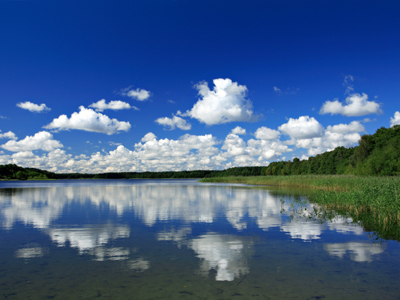
Waves - Reflection 01
This GCSE Physics quiz on waves asks questions about reflection. Waves transfer energy from one location to another and travel in straight lines. But that isn't always the case. When a wave hits a surface that it cannot penetrate, and if the surface does not absorb all the energy the wave carries, then it will bounce off the surface and travel in a new direction. This is reflection and you will be most familiar with it from your studies of light waves but any wave can be reflected.
When light waves strike a plane or curved mirror, they bounce off the shiny surface. The key point from the law of reflection is that the angle of reflection equals the angle of incidence. So if you want to turn a wave through 90°, the wave must hit the surface at 45°.
Ready for more?
not all...
quizzers. Try to win a coveted spot on our Hall of Fame Page.







